Table of Contents
ToggleMalacca Travel Guide, Itinerary, Things to Do & More
Located on the southwest coast of the Malaysian Peninsula, Malacca, also known as Melaka, is a UNESCO World Heritage Site filled with history, culture, and a unique blend of Portuguese, Dutch, and British legacies, intertwined seamlessly with Malay, Chinese, and Indian influences.
For many Malaysians, including myself, a trip to Malacca is more than just a tourist excursion — it’s a nostalgic journey back to our childhood. As a rite of passage, almost every Malaysian kid has embarked on the pilgrimage to Malacca at some point, either as part of their history curriculum or on a family trip during the holidays.
Join me as I take you on a journey through time and culture in this enchanting city, exploring its ancient streets, iconic landmarks, and hidden gems, all while uncovering the secrets of its colonial past to its bustling present.
Overview of Malacca
History

Geography
The state of Malacca sits on the southwestern coast of the Malaysian Peninsula, opposite Sumatra, and covers an area of 1,664 km2 (642 sq mi). With the exception of some small hills, Malacca is generally a lowland area with average elevation below 50 meters above sea level.
Read: Hiking Bukit Batu Putih (Near Malacca): Scenic Trail with Breathtaking Views of the Sea
Population
Malacca’s population is diverse, comprising various ethnic groups including Malays, Chinese, Indians, indigenous peoples, and some Eurasian descendants of the colonists. As of recent estimates, the population stands at around 940,000 people.
Language
Just like the rest of the country, Malay (Bahasa Malaysia) is the official language, but English, Chinese, and Tamil are also widely spoken.
Best Time to Visit Malacca

The climate in Malacca is hot and humid year-round.
You may find mixed information on the internet about ‘the best time to go to Malacca’, but I’ve been there many times, and honestly I’ve never experienced it being any less hot at any time of the year.
Malacca does not have a distinct rainy season like some other parts of the country, and if it rains at all, it doesn’t last long.
So, weather-wise, any time of the year is a good time to visit Malacca.
Personally, when planning a trip to Malacca, I would worry more about the crowd (and therefore traffic).
If you don’t fancy big crowds or heavy traffic, avoid going on public holidays like Chinese New Year, Christmas, and Eid. Be sure to check both Malaysian public holidays and Singaporean ones because Malacca is a very popular destination for Singaporean tourists and weekend trippers. During the peak tourist season, the prices for accommodation and activities may be higher too.
However, if you enjoy festivities, by all means, go during the holidays or weekends and soak in the lively vibes! The Jonker Street Night Market is also only available on weekends (Friday – Sunday).
How to Go to Malacca
By Air
Malacca does have its own airport, that is, Malacca International Airport (MKZ), and it used to have flights going to and from Penang and Indonesia, but most, if not all of these flights have been discontinued due to low volume. Most travelers prefer flying into Kuala Lumpur International Airport (KUL) and taking a bus or taxi to Malacca (approximately a 2-hour drive).
By Bus / Car
Buses from Kuala Lumpur or Singapore are convenient and comfortable. Malacca is well-connected by highways and easily accessible by car.
Journey time is approximately 2 hours from Kuala Lumpur and 3 hours and a half from Singapore (not including border crossing and immigration processes). For that reason, many travelers choose Malacca as a midway stopover point when traveling overland between Kuala Lumpur and Singapore.
Bus tickets can be purchased at the bus stations or online:
Getting Around in Malacca
Getting around in Malacca is relatively convenient, with several transportation options available:
Walking: Many of Malacca’s attractions, particularly in the historic city center, are within walking distance of each other. Exploring on foot allows you to soak in the city’s charm and discover hidden gems along the way.
Bicycle: Renting a bicycle is a popular and eco-friendly way to explore Malacca. Several rental shops offer bicycles for hourly or daily rates, allowing you to pedal around the city at your own pace.

Trishaw: Taking a ride on a colorful trishaw is a fun and iconic way to experience Malacca. Trishaws, adorned with vibrant decorations and equipped with speakers playing music, can be found near popular tourist areas and provide a unique way to tour the city.
Taxi/Grab: Taxis are readily available in Malacca and can be hailed on the street or booked in advance. Alternatively, you can use ride-hailing services like Grab for convenient and affordable transportation around the city.
Local Buses: Malacca has a network of local buses that connect various parts of the city and surrounding areas. While not as frequent or extensive as in larger cities, buses can be a budget-friendly option for getting around.
Car Rental: Renting a car provides flexibility and convenience, especially if you plan to explore attractions outside of the city center. Several car rental agencies operate in Malacca. However, I wouldn’t recommend renting a car if you’re only going to explore the Old Town. Streets are narrow and there are very limited parking spots. Most of the time, you’ll end up having to park outside of the town center and walk the rest of the way.
Things to Do in Malacca
1. Visit A Famosa - a 16th-Century Portuguese Fortress

This iconic fortress, built by the Portuguese in the early 16th century, is one of the oldest European architectural remnants in Southeast Asia.
Though much of it lies in ruins, the gatehouse, known as Porta de Santiago, remains standing in its weather-worn glory. The ruins tell tales of battles fought and won, of changing colonial powers, and the enduring spirit of this UNESCO World Heritage Site.
2. Climb St. Paul's Hill

Ascending St. Paul’s Hill is a journey both physical and historical, offering visitors a captivating glimpse into Malacca’s storied past. Perched majestically atop the hill is the ruins of the 16th-century St. Paul’s Church, a silent sentinel overlooking the city below.
The hill offers a breathtaking panorama of Malacca’s skyline, a juxtaposition of ancient and modern, where the past meets the present.
3. Walk Around the Dutch Square

Situated in the heart of the heritage city, this square serves as a focal point for visitors with its distinctive red buildings, remnants of Dutch colonial rule.
At the center of the square stands the Christ Church, and nearby is the towering Stadthuys, once the official residence of Dutch governors, now houses the fascinating Museum of History and Ethnography, offering insights into Malacca’s colorful past.
4. Visit Baba Nyonya Heritage Museum

Housed within a beautifully preserved 19th-century townhouse, this museum offers a fascinating glimpse into the opulent lives of the Baba Nyonya, descendants of Chinese immigrants who settled in the region and married local Malays.
The museum’s meticulously restored interiors are embellished with intricate woodcarvings, porcelain tiles, and elaborate furnishings, reflecting the distinctive blend of Chinese, Malay, and European influences that define Peranakan culture.
Guided tours offer deeper insights into the history and lifestyle of the Peranakan community, highlighting their contributions to Malacca’s cultural heritage.
5. Try Peranakan Cuisine

Blending Chinese and Malay influences, Peranakan cuisine bursts with fragrant spices, fresh herbs, and complex flavors. Signature dishes include Nyonya laksa, a rich and spicy coconut milk-based noodle soup, and ayam pongteh, tender chicken stewed in a savory sauce of fermented soybeans and spices.
Don’t miss out on Nyonya kuih, delicate and colorful desserts made from glutinous rice flour, coconut milk, and pandan leaves, offering a sweet conclusion to your culinary journey. You can also join a nyonya cooking class.
Also Read: Malacca (Melaka) Foodie Adventure: 10 Mouthwaterin Specialties of the Historic City
6. Rent a Kebaya Nyonya

The Kebaya Nyonya, is an elegant traditional attire of the Peranakan community, consisting of an embroidered blouse and a batik sarong. In Malacca, there are several shops where you can rent a full set of kebaya for a few hours or the whole day. For an additional fee, you can also have your hair and makeup done.
Then, you can stroll along the historic streets and pose for photographs against the backdrop of colonial architecture. You’ll be delighted to see how photogenic the whole town is — almost every corner is insta-worthy!
7. Explore Jonker Street
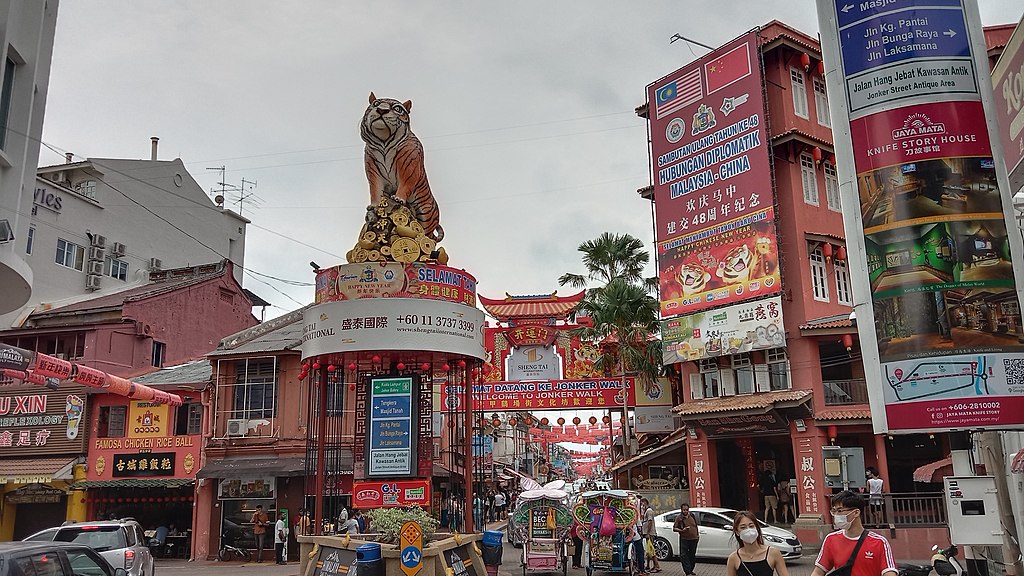
The heart of Malacca’s Chinatown, Jonker Street is a bustling thoroughfare that is lined with colorful shophouses, eclectic boutiques, and aromatic food stalls,
By day, the place teems with shoppers browsing for antiques, handicrafts, and traditional souvenirs. On weekend nights, Jonker Street transforms into a food paradise, with hawkers offering a tantalizing array of local delicacies, from savory satay to sweet Nyonya desserts.
8. Visit Malacca Sultanate Palace Museum

The Malacca Sultanate Palace Museum is a majestic tribute to the glorious era of the Malacca Sultanate, a period of immense significance in the history of Malaysia. The museum faithfully replicates the grandeur of the original 15th-century palace of the Malaccan sultans with its intricate architecture showcasing traditional Malay craftsmanship.
Inside is a treasure trove of artifacts, royal regalia, and historical exhibits offering a comprehensive insight into the splendor and majesty of the Malacca’s royal legacy.
9. Visit the Maritime Museum in a Ship Replica
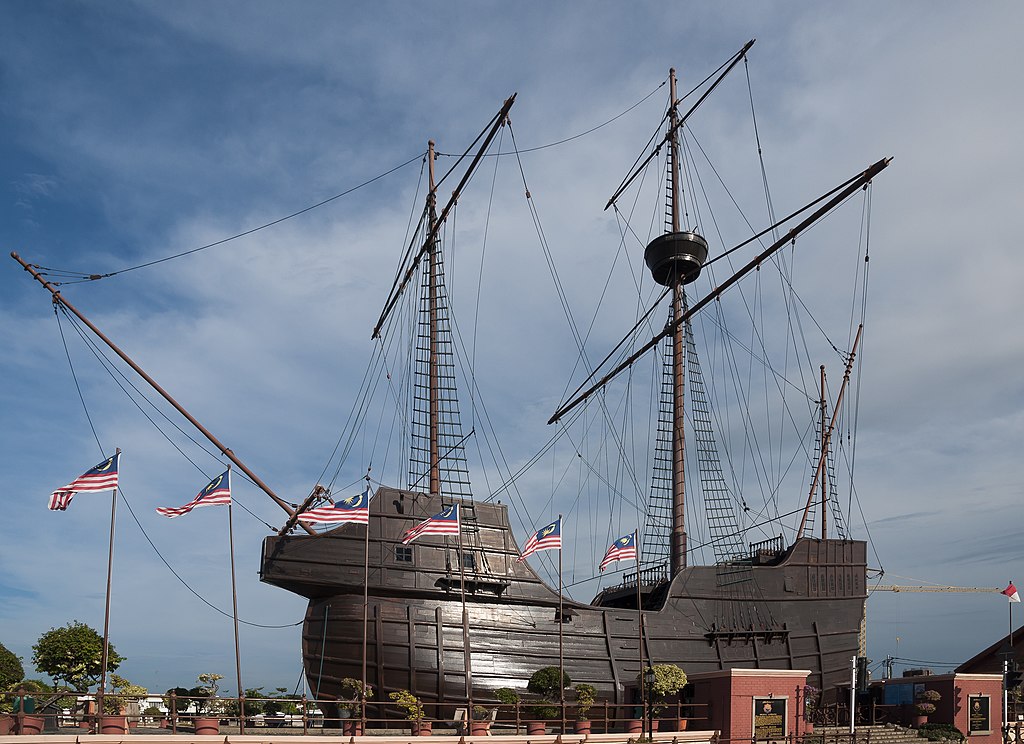
Housed within a striking replica of the Portuguese ship Flor de la Mar, this multi-story museum recounts the seafaring adventures and maritime conquests that shaped Malacca’s history.
From the era of the Malay sultanate to the Portuguese, Dutch, and British colonial periods, the museum chronicles Malacca’s strategic importance as a thriving port city through exhibits of ancient navigational instruments, maritime artifacts, and replicas of historic vessels.
10. Go Up the Taming Sari Tower
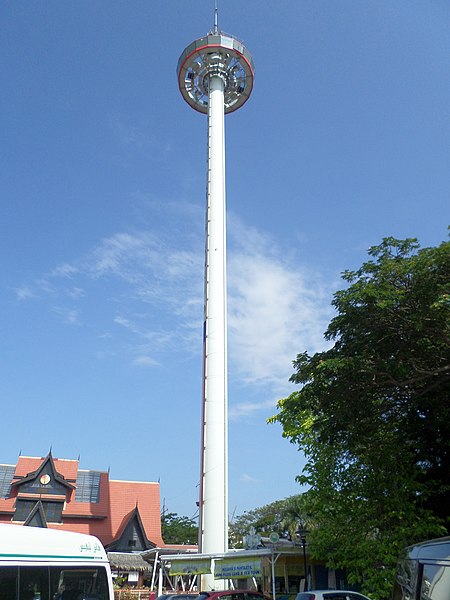
Named and designed after the legendary sword of a Malay warrior, the 110-meter-tall Taming Sari Tower is Malaysia’s first and tallest gyro tower, offering visitors a thrilling 360-degree view of the historic cityscape as its glass-enclosed viewing platform rotates and ascends to the top.
The observation deck is able to accommodate 80 people per viewing session, which lasts about 7 minutes each.
Visitors can expect to see views of the Straits of Malacca, the Malacca River, the Maritime Museum, the St. Paul’s Hill, and many more!
Another option for a bird’s eye view of the city is from The Shore Sky Tower.
11. Design Your Own Cup Noodles
Mamee is a Malaysia’s beloved childhood snack brand that has been around for as long as I can remember. Now, they have actually opened their own museum called Mamee Jonker House on Jonker Street that also doubles as a cafe and merchandise shop.
Apart from showcasing a variety of the iconic noodle snacks, the interactive museum also allows visitors to unleash their creativity at the DIY noodle cup station, where they can customize their own Mamee noodles toppings and seasonings, and even design the cup themselves!
12. Visit the Oldest Chinese Temple in Malaysia
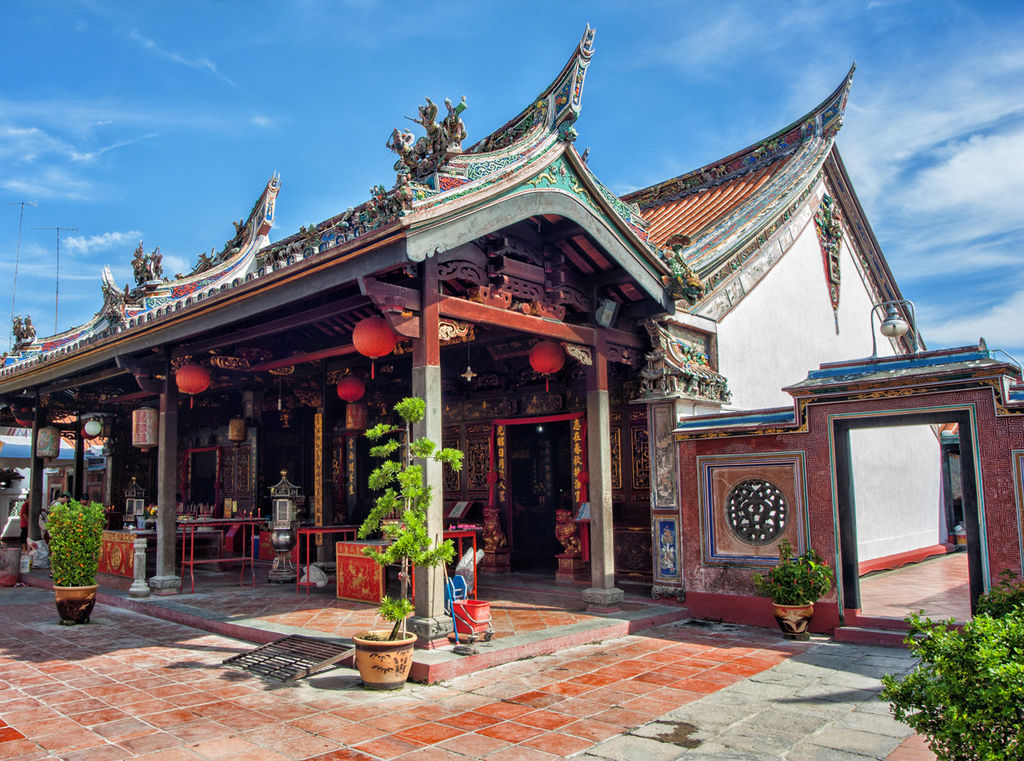
Showcasing beautiful architecture and cultural richness, the Cheng Hoon Teng Temple is the oldest functioning Chinese temple in Malaysia. The temple site was founded during the Dutch era in 1645, although there is some controversy about the exact time the temple was built. Some inscriptions found in the temple suggest that it might already have been there earlier in the 15th century.
In 2003, the temple was awarded a UNESCO award for outstanding architectural restoration.
13. Marvel at the Malacca Straits Mosque
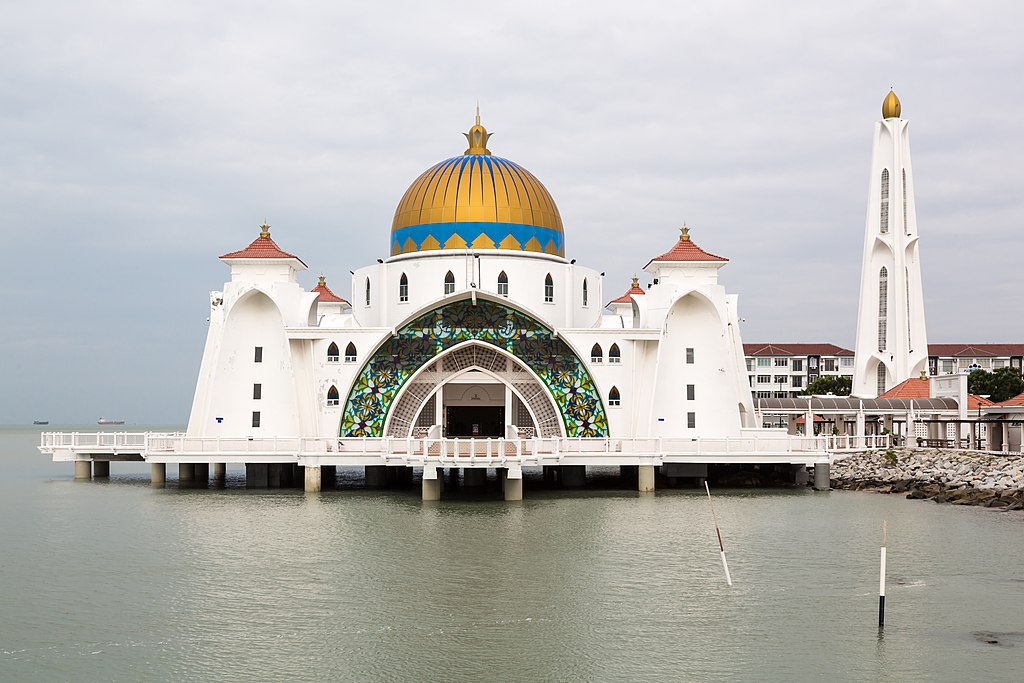
The Malacca Straits Mosque, also known as Masjid Selat Melaka, is a majestic structure located on the manmade Malacca Island. When the water level is high, the mosque appears to float on the water, creating a mesmerizing sight, especially at night.
Within the mosque compound stands a 30-meter tall minaret, which serves a dual purpose as a lighthouse.
14. Go on a River Cruise
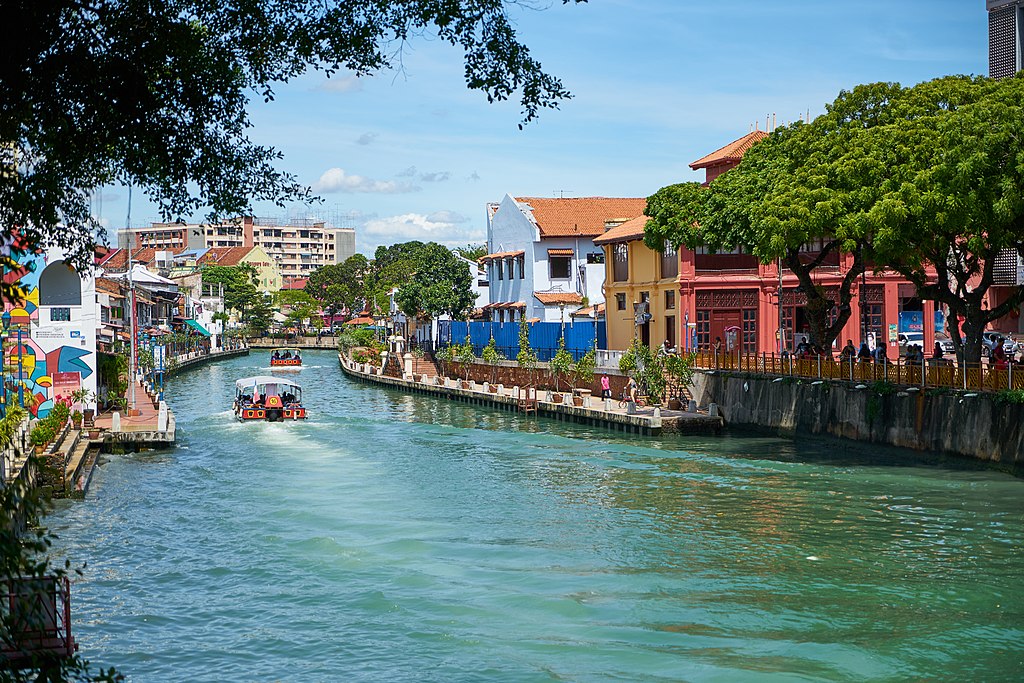
Meandering gracefully through the heart of the city, the Melaka River has been a witness to the city’s entire history since before the Sultanate all the way to the present day.
Once a bustling trade route teeming with merchant ships from distant lands, the river is now lined by charming riverside cafes, colorful street art, and historic landmarks. A leisurely 45-minute cruise along the river offers a unique perspective of Malacca’s iconic attractions, especially at night when the river comes alive with the glow of twinkling lights, casting a magical ambiance over the waterfront promenade.
15. Ride a Trishaw

Riding a trishaw in Malacca is a unique and nostalgic way to explore the city’s charming streets. These colorfully decorated tricycles, with their ornate decorations and cheerful music, evoke a sense of whimsy, treating passengers to a leisurely ride.
The trishaw experience becomes not only a mode of transportation but also a cultural adventure, as riders often share anecdotes and historical insights about the landmarks en route.
16. Wander Through Kampung Morten Traditional Village
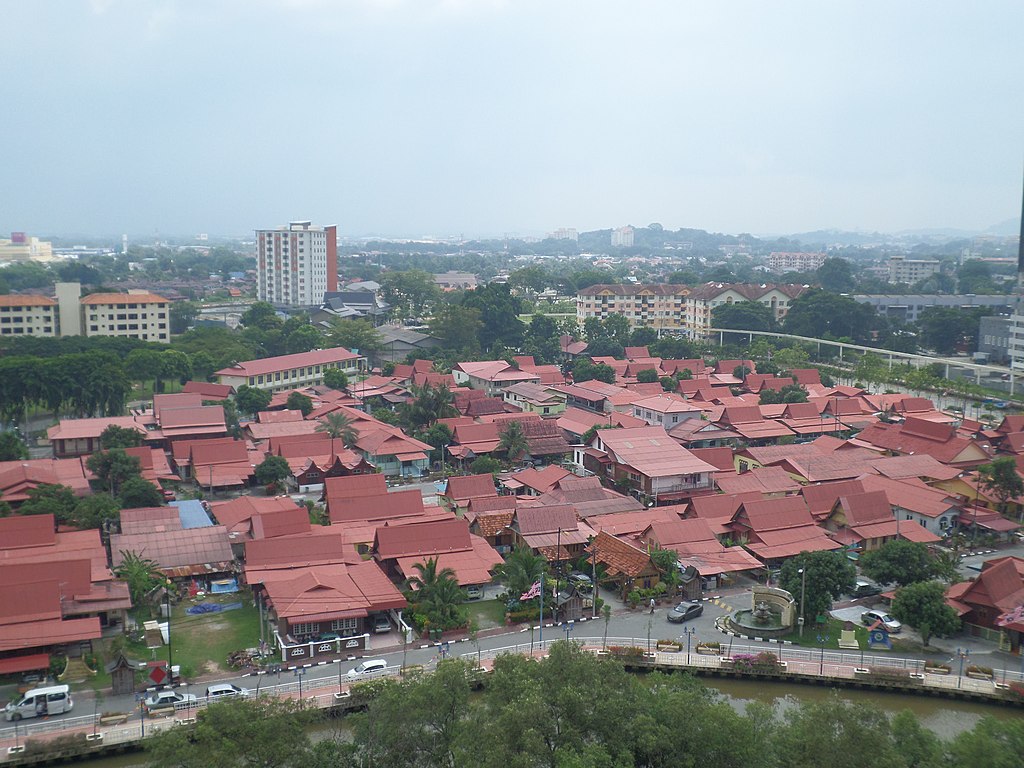
Named after Frederick Joseph Morten, a British land revenue collector during the British Malaya era, ‘Morten Village,’ is a traditional Malay village that has been turned into a tourist destination after being designated a heritage village under Malacca’s Preservation and Conservation Enactment in 1989. Today, it boasts over 100 well-preserved traditional Malay houses.
17. Have a Day of Fun at Water Parks
Malacca has a few thrilling water parks that offer respite from the tropical heat and endless fun for visitors of all ages. From exhilarating slides and lazy rivers to wave pools and kiddie zones, you can look forward to unforgettable aquatic adventures.
Popular water parks in Malacca include the Melaka Wonderland, Bayou Lagoon, and the A’Famosa Water Theme Park, located within the expansive A’Famosa Resort.
18. Drink Coconut Shake at Klebang Beach

However, it’s the indulgent coconut milkshakes that truly steals the show. Served in makeshift stalls along the beachfront, this delectable concoction blends freshly extracted coconut water, creamy coconut milk, shaved ice, topped with a scoop of coconut ice cream, resulting in a creamy and refreshing beverage that provides instant relief from the tropical heat.
19. Go Paramotoring
Unbeknownst to many, Malacca actually offers the perfect landscape for paramotoring with its vast expanses of open spaces and breathtaking views of the sea.
Participants embark on a thrilling airborne journey while seated in a comfortable harness beneath a motorized paraglider wing. The best thing is that you don’t need prior knowledge or experience. Qualified pilots will handle all aspects of the flight, while you sit back, relax, and enjoy.
20. Visit Malacca Heritage Studios
Malaysia Heritage Studios, formerly known as Mini Malaysia and ASEAN Cultural Park is a cultural theme park, featuring two distinct sections. One segment highlights traditional homes from each Malaysian state, while the other showcases traditional houses from every Southeast Asian country. Additionally, each house serves as an art gallery and museum.
21. Visit the Crocodile Farm
The Malacca Crocodile and Recreational Park is a privately-run crocodile farm and zoo that spans over an area of 3.5 hectares, making it the largest crocodile farm in Malaysia. Although it mainly exhibits crocodiles, the farm also hosts other reptiles, such as snakes, turtles, tortoises, and terrapins, as well as some birds and mammals.
On weekends, the farm features live crocodile shows and feeding demonstrations.
How Much Time to Spend in Malacca

Day trips to Malacca from Kuala Lumpur are very popular, considering it’s only about 2 hours’ drive between the two cities. Most of the attractions in Malacca are clustered in one area, that is in the old town, so you can see quite a lot in one day. If you use your time efficiently, you can even make it to the other attractions that are a little outside of the main touristy area.
However, if you like to take on a more laid-back approach and maybe explore the Jonker Street Night Market till late, I would highly recommend staying for at least one night. Besides, Malacca has so many beautiful hotels that are set in historical buildings, it would be a shame not to try any.
Where to Stay in Malacca

Malacca offers a wide range of accommodation options to suit various preferences and budgets, including riverside resorts, dormitories, modern international chains, and charming boutique hotels set in historic buildings.
Popular locations to stay in Malacca are:
1. Jonker Street Area: Perfect for immersing yourself in the city’s heritage and where all the action is. Find boutique hotels, guesthouses, and homestays.
2. Bandar Hilir: Offers a mix of luxury hotels and budget accommodations, close to popular attractions like A Famosa and St. Paul’s Hill.
Practical Tips
- Accommodation Choices: Consider staying in one of the heritage hotels or boutique guesthouses for a unique and fully immersive Malaccan experience.
- Time Your Visit: Time your visit based on your personal preferences. Go on weekends and public holidays if you like the festivities and want to see the Jonker Street Night Market. Otherwise, avoid the peak periods. Try to arrive early in the morning so that you can do some exploring before it gets too hot outside, and then continue in the late afternoon.
- Beat the Heat: Malacca can be very hot, especially at midday. Bring a hat, sunglasses, and sunscreen. Don’t forget to stay hydrated.
What to Wear in Malacca
Although Malaysians are generally conservative, Malacca sees a lot of foreign tourists every day, therefore Western-style clothing is very common, including shorts, tank tops, skirts, and summer dresses. Due to the heat and humidity, go for something lightweight and airy. Do bring something to cover yourself with if you intend to visit religious sites.
Additionally, you will be doing a lot of walking, so comfortable footwear is a must.
Final Thoughts

With its rich history, cultural heritage, and UNESCO World Heritage Site status, it goes without saying that Malacca is the perfect destination for history buffs.
However, the city is also brimming with a variety of activities and attractions to keep all travelers entertained. From exploring vibrant markets and savoring delicious local cuisine to embarking on thrilling adventures like paramotoring or enjoying the picturesque views along the Malacca River, there’s something for everyone to discover and enjoy.
Moreover, for those simply seeking Instagram-worthy snapshots, Malacca’s charming streetscapes and architectural gems offer plenty of opportunities for memorable photos.
Have you visited Melaka before? What did you like most about it? Share your experience in the comment section below.